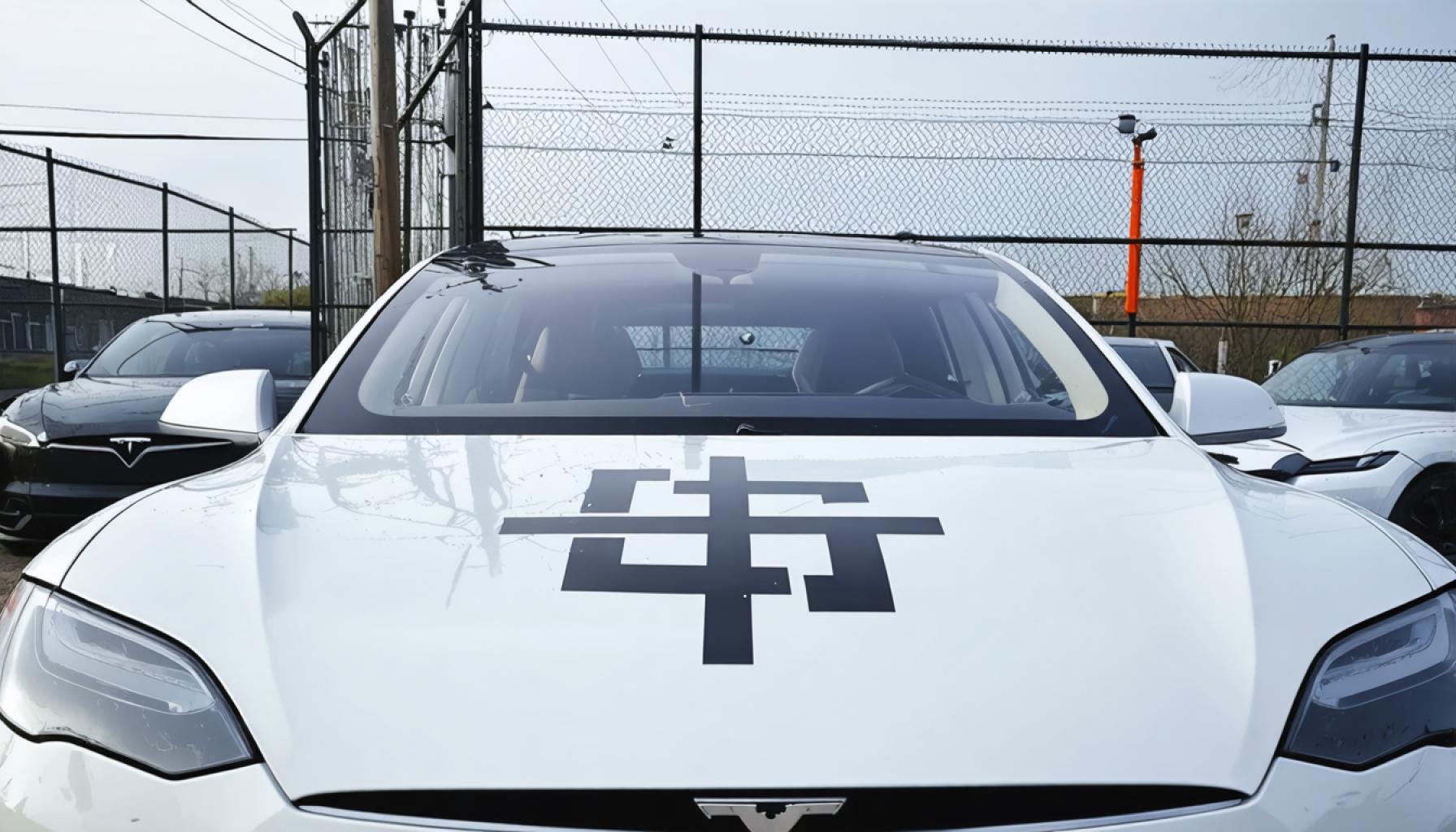- Recent vandalism incidents in New York City involved swastikas defacing Teslas, viewed as potential hate crimes by authorities.
- Though typically a symbol of hate against minorities, the swastika here may target Elon Musk due to his divisive public figure status.
- The incidents underscore the nuanced intersection of symbolism, free speech, and intent.
- Misusing symbols of oppression for protest fails to lessen their historical impact and may continue the cycle of miscommunication.
- These events prompt reflection on the powerful influence of symbols and the importance of recognizing context and motivation.
- The situation invites broader contemplation about expressions in the public arena and their underlying messages.
On a brisk evening in Manhattan’s storied Lower East Side, as neon lights flickered against brownstone façades, two figures emerged from the shadows to emblazon a parked Tesla with a vivid red swastika. Days later, in Brooklyn’s eclectic streets, another Tesla suffered a similar fate—its doors defaced with carved reminders of hate and the chilling word, “Nazis.”
At first glance, the perpetrators’ actions align with what many would recognize as a hate crime. After all, the swastika—a symbol twisted by history into an emblem of terror—has long signaled a threat against Jewish communities and other minorities. Yet, this recent wave of vandalism seems entangled in a more nuanced web of motivations and misdirections.
The vandalism is being investigated as a hate crime by New York City’s Police Department. However, the true target may not be the communities historically victimized by such symbols. Instead, the animosity seems directed at Elon Musk, the polarizing figurehead of Tesla, known not only for his ventures into electric vehicles and space exploration but also for his controversial public persona. Musk has often courted controversy, drawing critiques for gestures some perceive as borderline offensive, and for his associations with divisive political entities.
Residents of these New York neighborhoods remain puzzled, grappling with the dichotomy of a hate symbol repurposed in an act of protest. This misuse illustrates the complex intersection of free speech, symbolism, and intent. What does it signify when a symbol of oppression is wielded not to oppress directly, but as a misguided tool of dissent?
The key takeaway here is a reminder of the profound power of symbols and the importance of context. A swastika, emblazoned as protest rather than affirmation, does not wash away its historical weight. Misappropriating the symbol fails to advance any cause and risks perpetuating the same cycle of miscommunication and animosity it’s ostensibly wielded against.
Amidst the electric hum of Teslas cruising by and graffiti artists sketching their truths, the city’s pulse beats on. As these symbols and actions continue to appear, New Yorkers—and indeed, onlookers around the world—are challenged to consider each layer of motivation beneath the surface. This incident calls for a moment of reflection on the impact of our voices, both visual and vocal, in the vast public square.
Uncovering the Layers: The Vandalism of Teslas and the Complex Web of Symbolism
Deconstructing the Incident
On the streets of New York City, the defacement of Tesla vehicles with swastikas has sparked a wider conversation beyond its initial shock value. While it’s apparent that these actions are being investigated as hate crimes, the deeper implications of using such potent symbols call for a nuanced exploration.
Understanding the Implications
Symbolism and Its Historical Weight:
The swastika is historically linked to the Holocaust and the oppression of Jewish communities, serving as a terrifying emblem of the Nazi regime. Even when repurposed as a form of protest, its historical connotations cannot be ignored, and its use can perpetuate the same cycles of hatred it aims to critique.
Misguided Expression of Dissent:
The targeting of Elon Musk, Tesla’s CEO, through these acts, highlights the potential consequences of misdirected protest. While Musk’s polarizing presence in tech and social spheres invites critique, conflating personal protest with symbols of hate only muddles the intended message.
Exploring the Motivations
Complex Intersectionality of Actions:
The acts of vandalizing Teslas with swastikas underscore a conflict between the intent and interpretation of symbols. This incident exemplifies how symbols of oppression can be misappropriated in ways that negate their historical atrocities.
Challenges in Symbolic Protest:
When engaging in protest, particularly through the use of powerful symbols, understanding both the immediate and broader implications becomes crucial. This calls for a thoughtful reflection on how such actions impact the intended audience versus those inadvertently affected.
Community Reactions and Reflections
Local Community Response:
Residents of Manhattan and Brooklyn face the challenge of parsing the implications of these acts. For many, the primary concern remains the disrespect and perpetuation of historical trauma against Jewish communities and minorities.
Public Discourse and Responsibility:
These acts propel discussions on free speech, responsibility, and the power of public symbols. Engaging in responsible discourse requires acknowledging the symbolic weight carried by historical symbols and the impact of their use or misuse.
Recommendations for Responsible Symbolic Protest
1. Educate and Reflect: Before employing symbols with historical significance, educate yourself about their origins and historical weight. Consider how their use affects different demographics.
2. Choose Symbols Wisely: Opt for symbols of protest that unequivocally align with the message you wish to convey and avoid those with a history of hate and oppression.
3. Foster Open Dialogue: Engage in discussions that promote understanding and bridge the gap between intention and perception, especially in diverse communities.
4. Effect Change through Unity: Seek to unite rather than divide by aligning with broader community efforts that address shared concerns without alienating or harming others.
For further reading about the signals of symbolic protest and other community challenges, visit The New York Times.
Conclusion
The use of powerful, historically tense symbols in public protest, like the recent vandalism of Teslas with swastikas, serves as a compelling reminder of the impact of symbolism. To affect change, we must engage carefully and responsibly, choosing actions that respect history and promote understanding.
